Shuzenji Onsen Itinerary: Overnight in Izu’s Best Hot Spring Town
Hoping for a traditional onsen town experience in Japan, minus the crowds that can come with it? There’s a perfect mini alternative to Hakone – Shuzenji Onsen on the Izu Peninsula is perfect for visitors wanting to “blend in!”
Located in Shizuoka Prefecture between Tokyo and Kyoto but overlooked by most tourists speeding past on bullet trains, the Izu Peninsula is home to five onsen resort towns with a local feel. Shuzenji Onsen is just one of them, and considered Izu’s best.
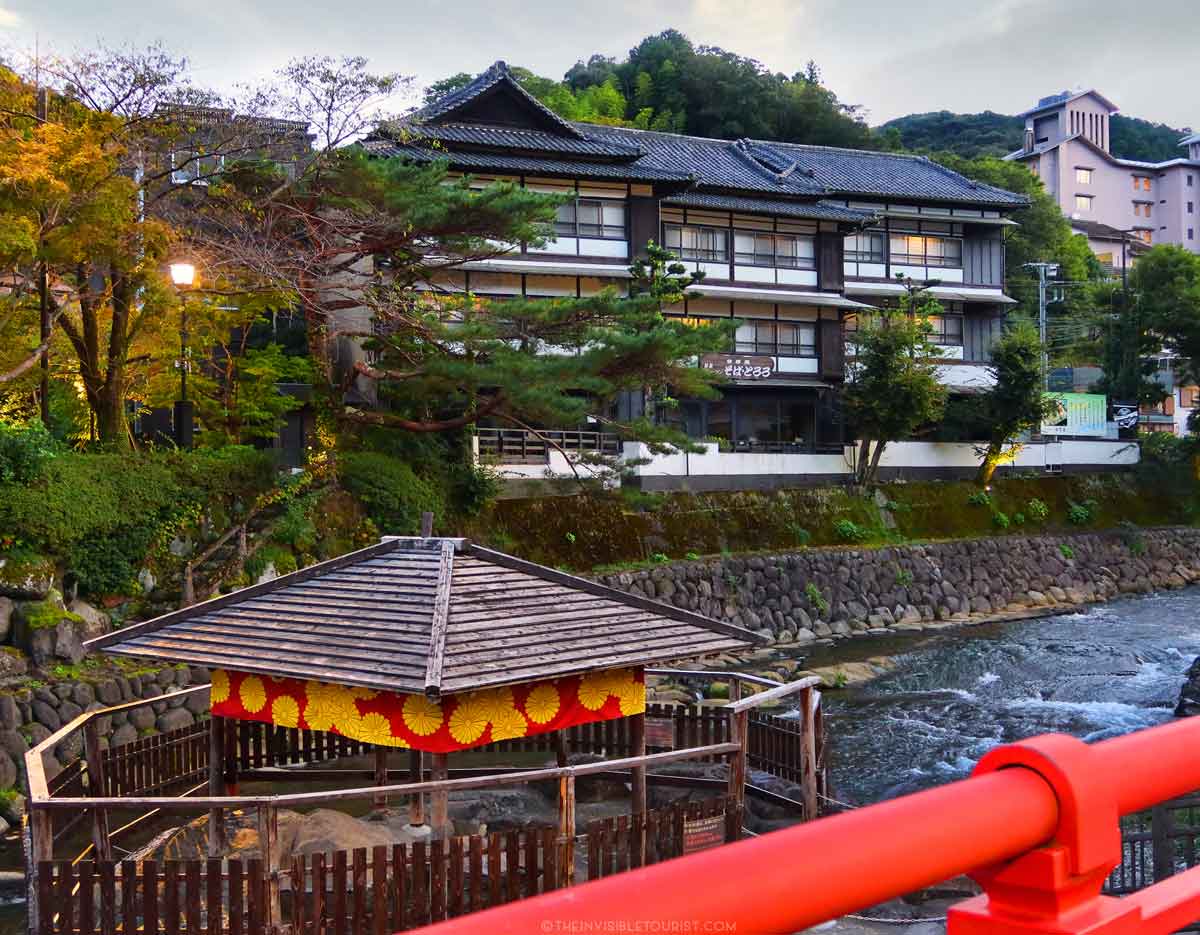
I could easily see why this lovely town is affectionately known as the Little Kyoto of Izu for its 1,200-year history.
With potential views of Mt Fuji from your room, if you’d love to learn where I stayed for onsen, things to see and do, how to get there and tips for visiting Shuzenji, read on for more!
This post contains affiliate links, at no extra cost to you. I may earn a small commission if you click through and make a purchase.
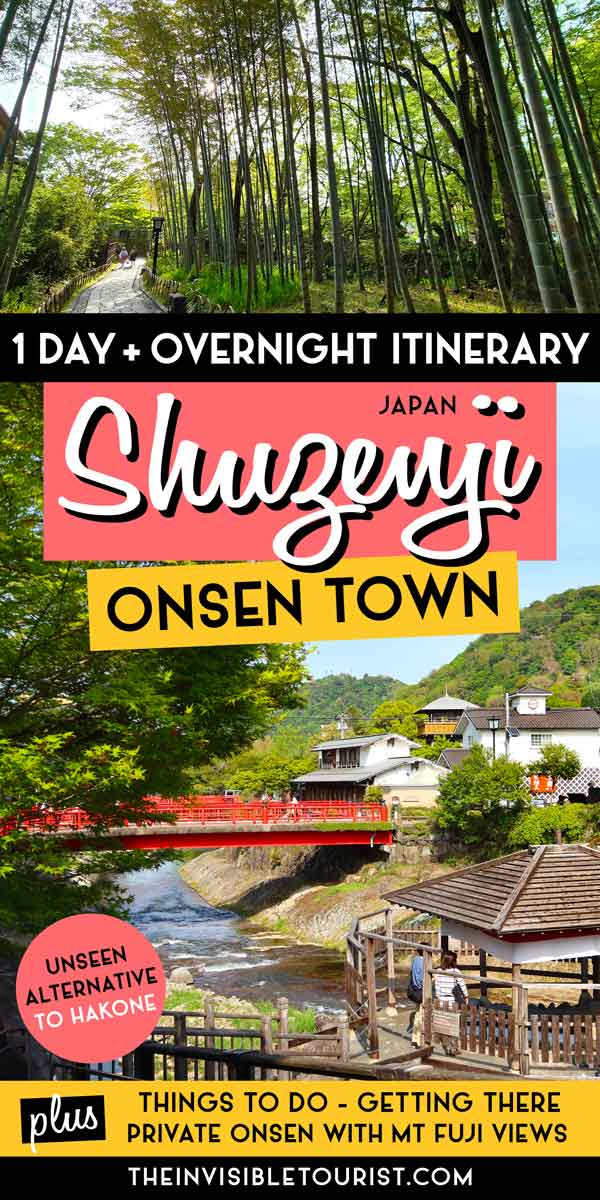
Why Shuzenji is a nice alternative to Hakone
Just 2 hours from Tokyo, tourists flock to Hakone for the quintessential ryokan (Japanese inn) experience. However in recent years it’s become so popular, in my 2 week Japan itinerary I no longer recommend it for visitors wanting to avoid crowds.
Offering mineral-rich waters into accommodation directly from the source, Shuzenji Onsen 修善寺温泉 has been known for its hot springs since ancient times. Unlike the masses of crowds overtaking Hakone, Shuzenji Onsen flies under the tourist radar but offers a similar experience.
Even from some locations, a view of Mt Fuji from your room is possible if she’s not hiding behind clouds – more on where I stayed down the page!
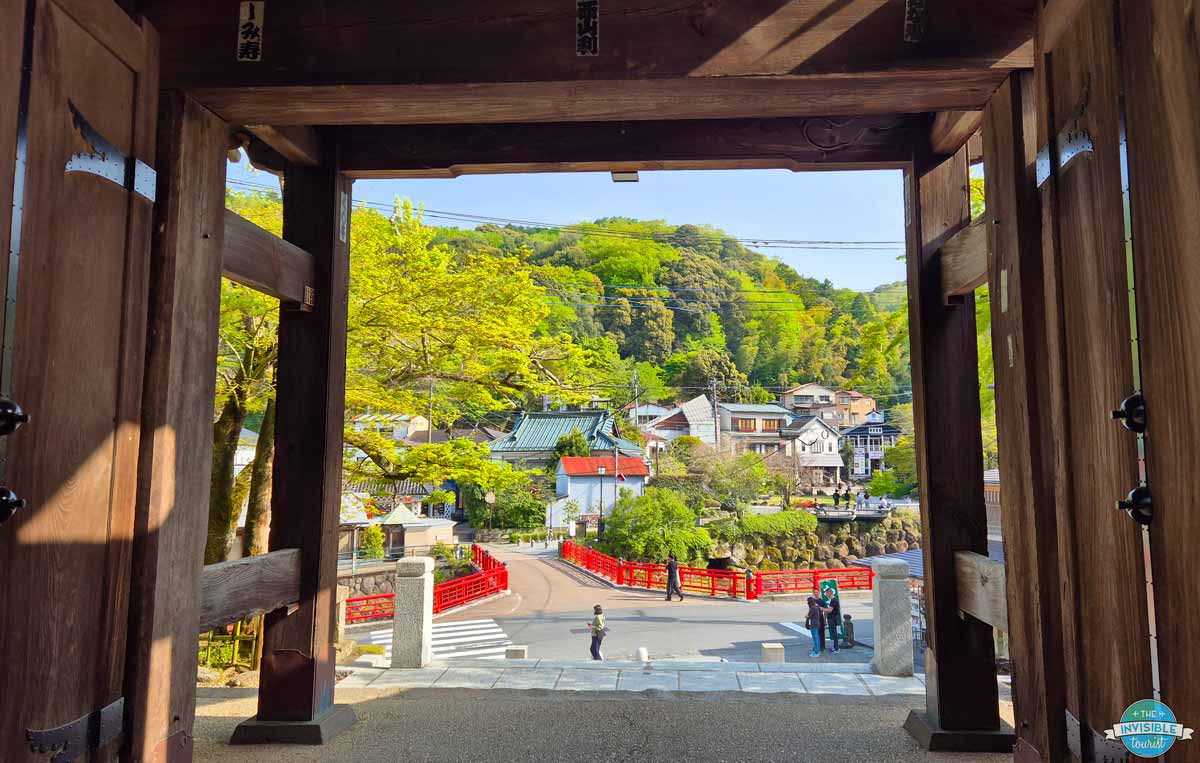
Things to do in Shuzenji Onsen: One day itinerary
Most of the sights in Shuzenji Onsen can be seen in a few hours as it’s easy to explore on foot. A self-guided walking tour recommended by the visitor’s centre is 1.5 hours, but I spent longer to really relax and soak it all in.
So, what to do in Shuzenji Onsen? Let’s take a look!
Visit Shuzenji Temple
Are you familiar with the centuries-old “Tale of the Genji” novel? Along with Uji near Kyoto, Shuzenji played a major role in the story.
Shuzenji Temple was built in 807 AD during the Kamakura Period, some 1,200 years ago. It was founded by the head of Shingon Buddhism, Kobo Daishi, who is well-known in Japanese history. It is part of the Soto sect today.
TIP: More about different sects of Buddhism in my review of a zen meditation class in Kyoto).
Over time two men of the Kamakura Shounate were imprisoned here during a family feud, and one was believed to have been assassinated in a poison bath. Inside the museum is the assassinated young shogun’s death mask.
Despite its turbulent history, locals adore this temple for its vibrant autumn colours during mid-November to early December.

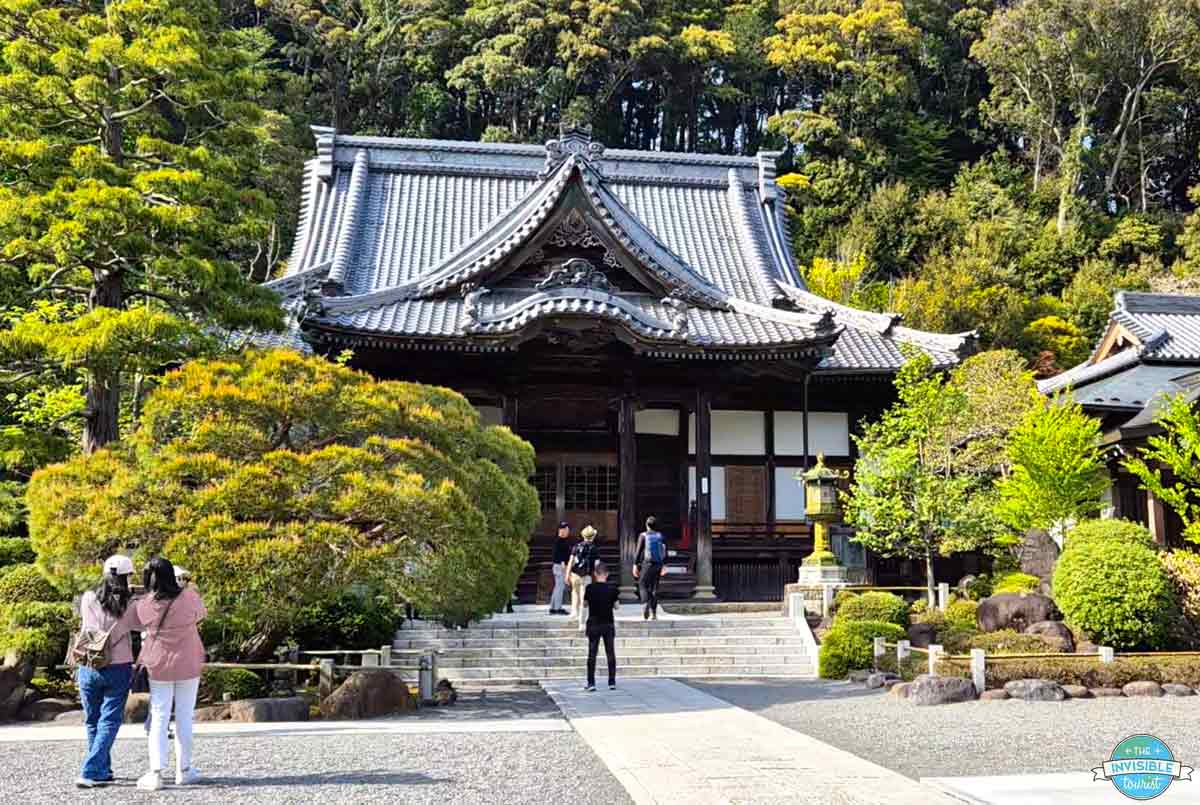
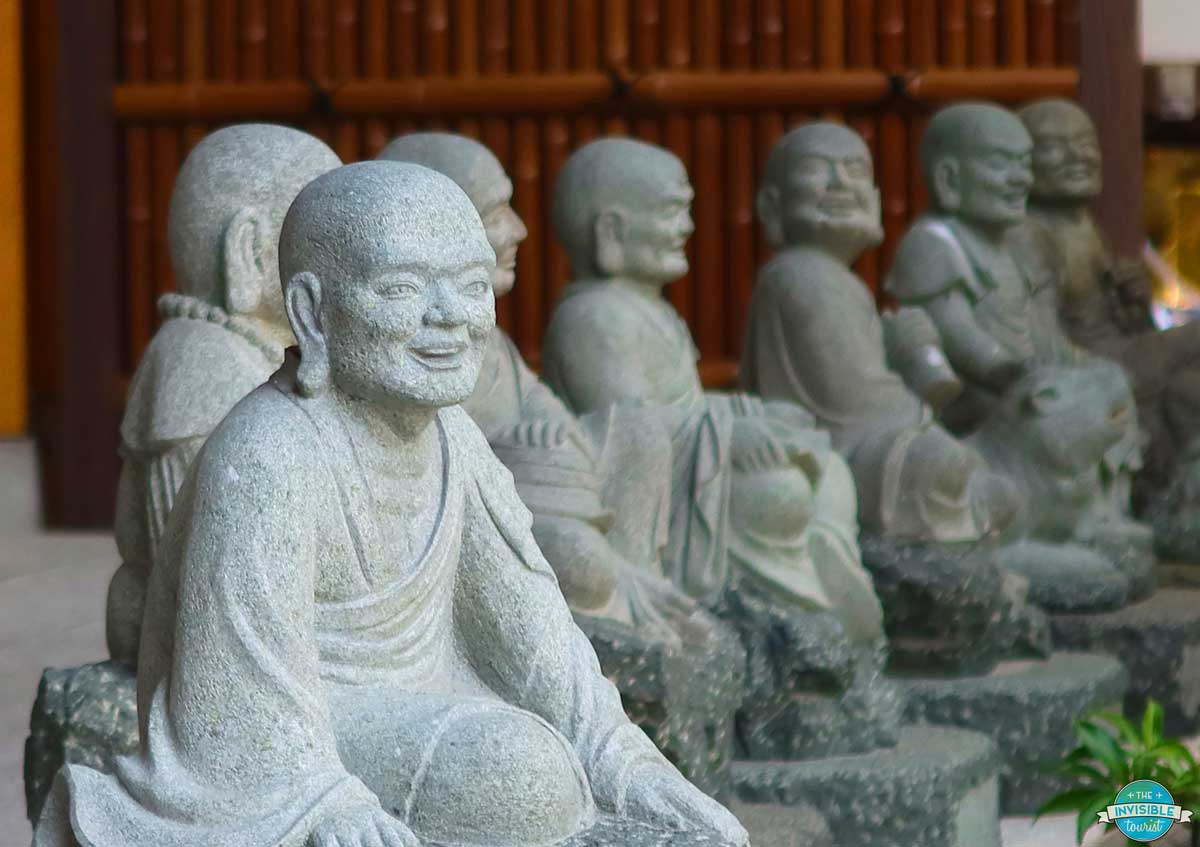
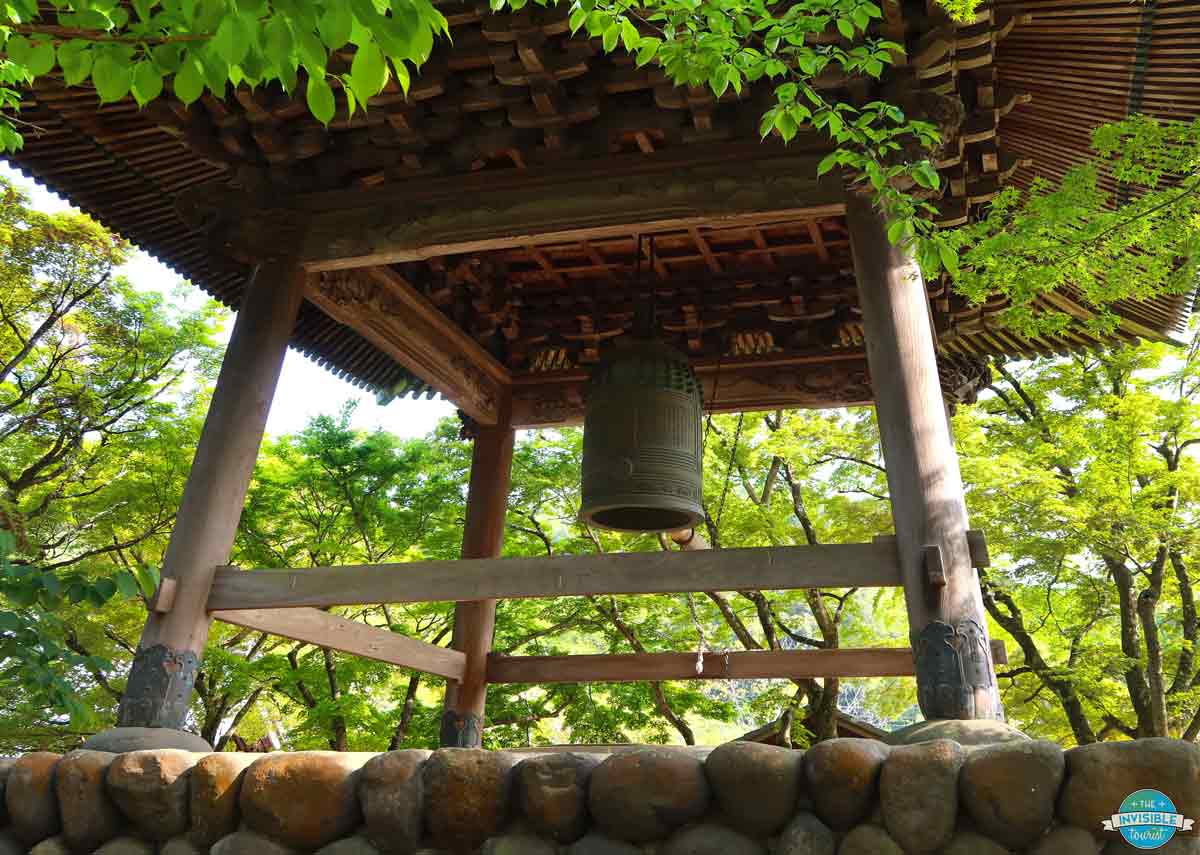
Take a stroll along the bamboo-lined path
It’s easy to miss this path actually, I walked past it the first time! Their tall stems waving gently in the breeze, the bamboo provides a shady break from the sun.
In the path’s centre is a large circular bench to lie on and gaze at the sky framed by bamboo leaves. Lanterns on wooden posts line the pathway, creating a cozy ambience.
No need to brave the crowd crush at Arashiyama bamboo grove in Kyoto! If you stay here in the town rather than in the surrounding hills (as I did), don’t miss the mini bamboo forest’s night illuminations.
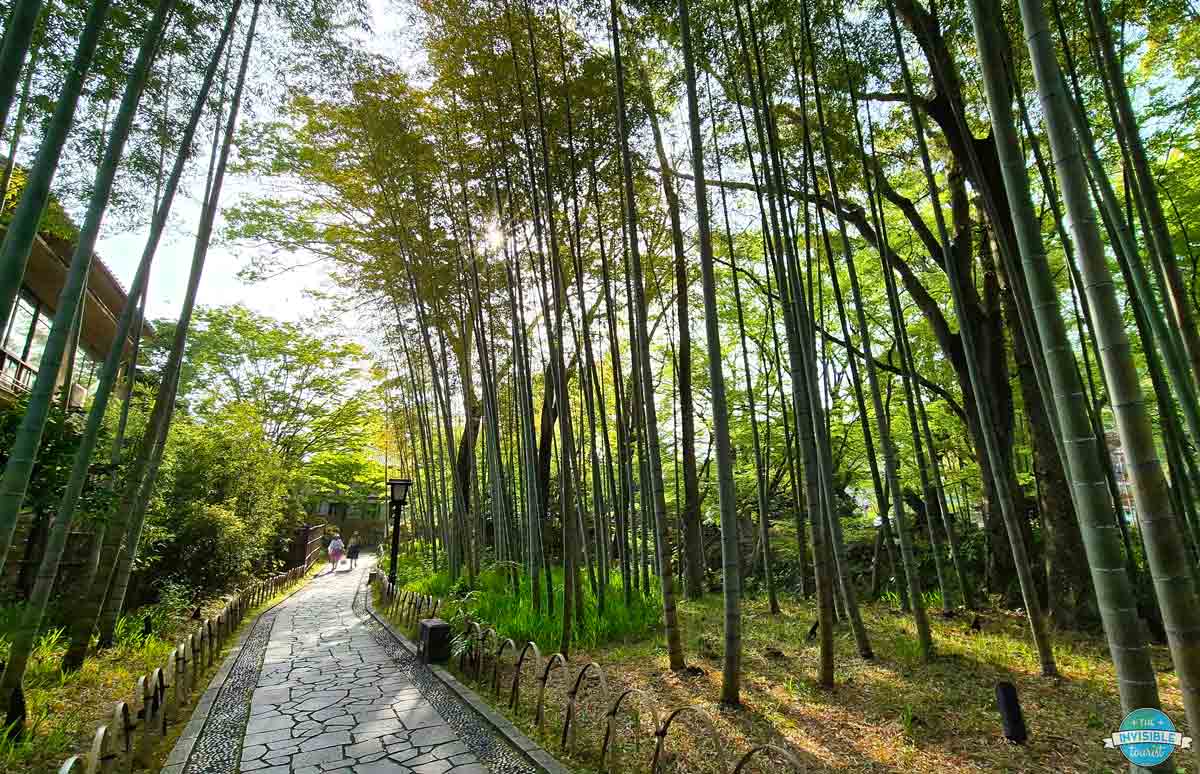

Relax to the sounds of Katsura River
Spanning the river, vermilion Maple Bridge creates a striking contrast to the lush green trees of the same name in spring and summer.
During autumn, these Japanese maples transition into red hues to match the bridges from mid-November to mid-December. It would be an amazing time to visit Shuzenji Onsen!
For more autumn colours, you can also visit Shuzenji Maple Leaf Walk. See pink blossoms at the Shuzenji Plum Grove in early February – early March — you may even be ale to catch a glimpse of Mt Fuji, too!
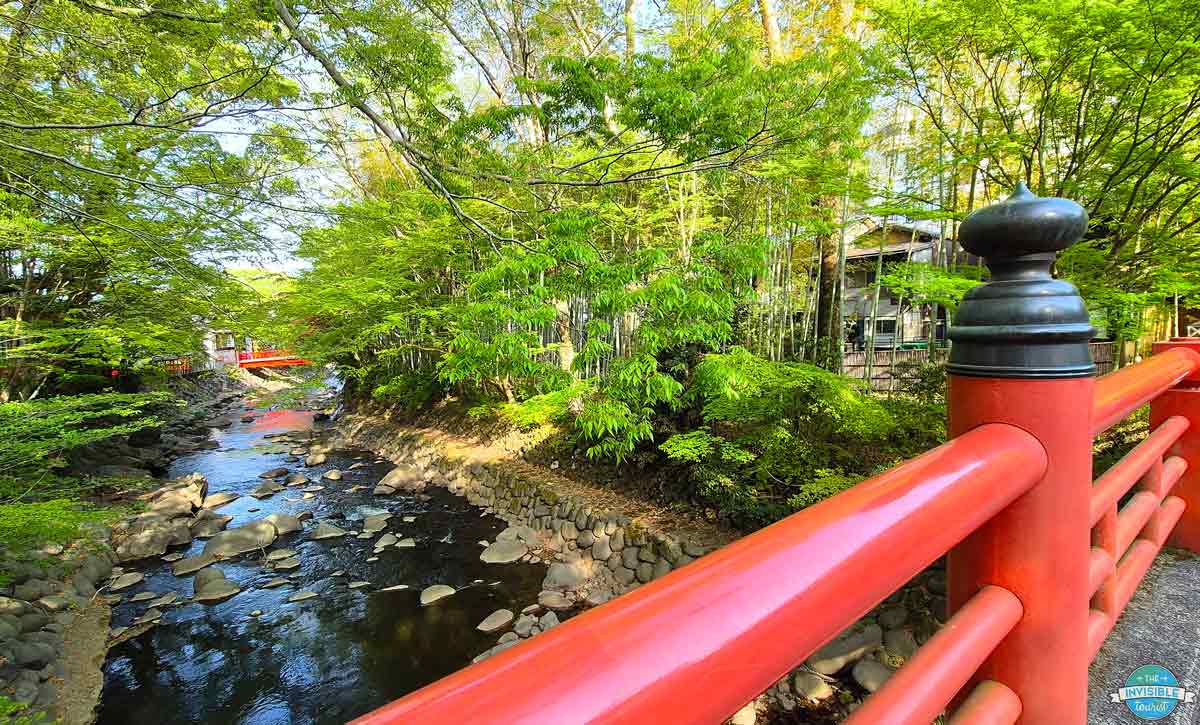
Soak away weary feet at Kawarayu
Kawarayu is the name for a small foot bath fed by natural hot spring water just a few steps away from Tokko no Yu. Take a seat and allow your feet to enjoy a well-earned rest!
See Tokko no Yu
Sheltered by a wooden gazebo at the centre of Katsura River, Tokko no Yu is the icon of Shuzenji Onsen and the town was built around it.
This spot is believed to be the birthplace of Shuzenji Onsen back in 807 AD. Legend says it came into being when monk Kobo Daishi decided to strike this spot with his tokko (walking stick) and hot spring water began gushing out.
NOTE: There is a sign prohibiting touching the water. This would be to stop oils and dirt from human hands contaminating the water. Despite other tourists not heeding the sign, please remember to “be invisible” here. You can always try the Kawarayu footbath a few steps away instead.

Shop for omiyage (locally-produced souvenirs)
The custom of gifting omiyage is huge in Japan! These are all kinds of locally made and sourced goods (usually edible), wrapped and presented beautifully to gift to friends and family.
There are a few cute little shops in the town selling omiyage, such as:
- Dashi (fish-based stock)
- Unique salts and seasonings
- Tea grown in fields with Mt Fuji overlooking them
- Tea ware, Japanese crockery, other kinds of small kitchenware and homewares
- Fresh produce, including mikan みかん – Izu is famous for these mandarin-like citrus fruits!
- Wasabi わさび – Izu is also known for growing some of Japan’s best wasabi.
I bought some lovely hand-crafted cloth pouches as gifts, and a gorgeous cherry blossom mug as a memento from my second visit to Izu.
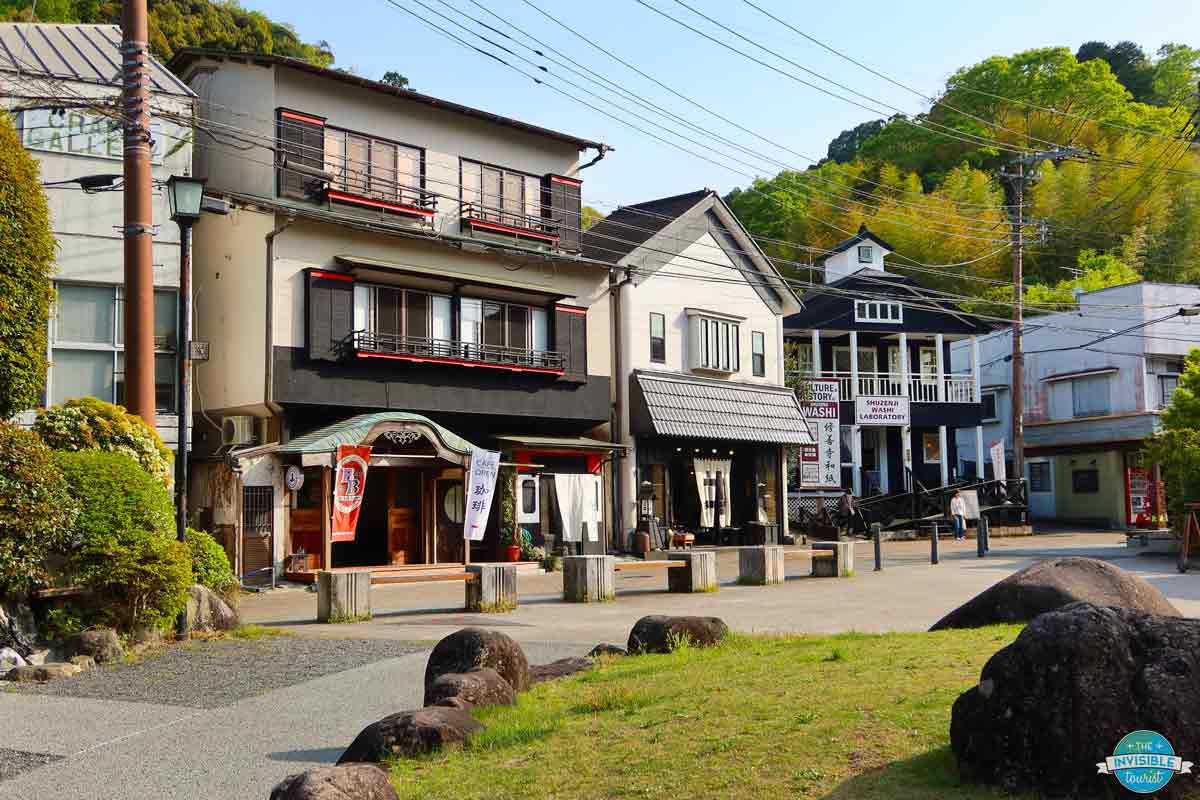
Try your hand at a paper-making workshop
In an adorable old building is Shuzenji Washi Laboratory, showcasing the art of paper making in the area passed down through generations for 1,000 years.
If you’re interested in learning about the traditional paper-making process in Japan, the museum houses a fantastic display with English verbiage. A local craftsman also provides a demonstration.
Create your own washi paper as a beautiful souvenir from Shuzenji Onsen! Check availability on the Shuzenji Washi Laboratory website.
Enjoy a break at a riverside cafe
I love stumbling across cute cafes in Japan! There are all kinds of little Shuzenji restaurants to suit different tastes.
Whether you’re in the mood for gelato, coffee, sweets, bubble tea (topioca), you’ll find it. Perhaps you’ll opt for something more savoury such as tempura, soba or ramen?

Be left in awe at Hie Shrine
Also founded in 807 AD, Hie Shrine was once the guardian deity of Shuzenji Temple and believed to protect it.
Its cedar trees are enormous and joined at their bases, while the Ichii Oak is a designated Cultural Property. Helping to tie the old world to the new is a vending machine for its ema (wishing plaques).
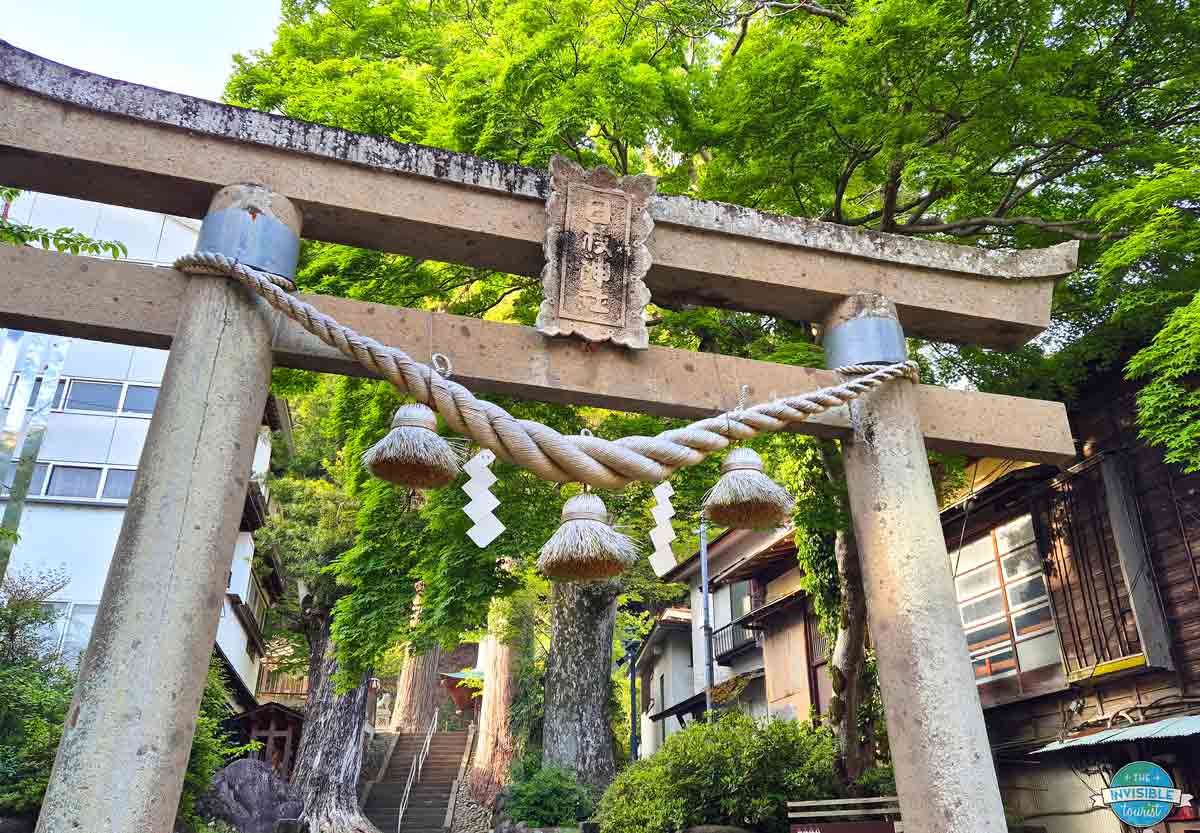
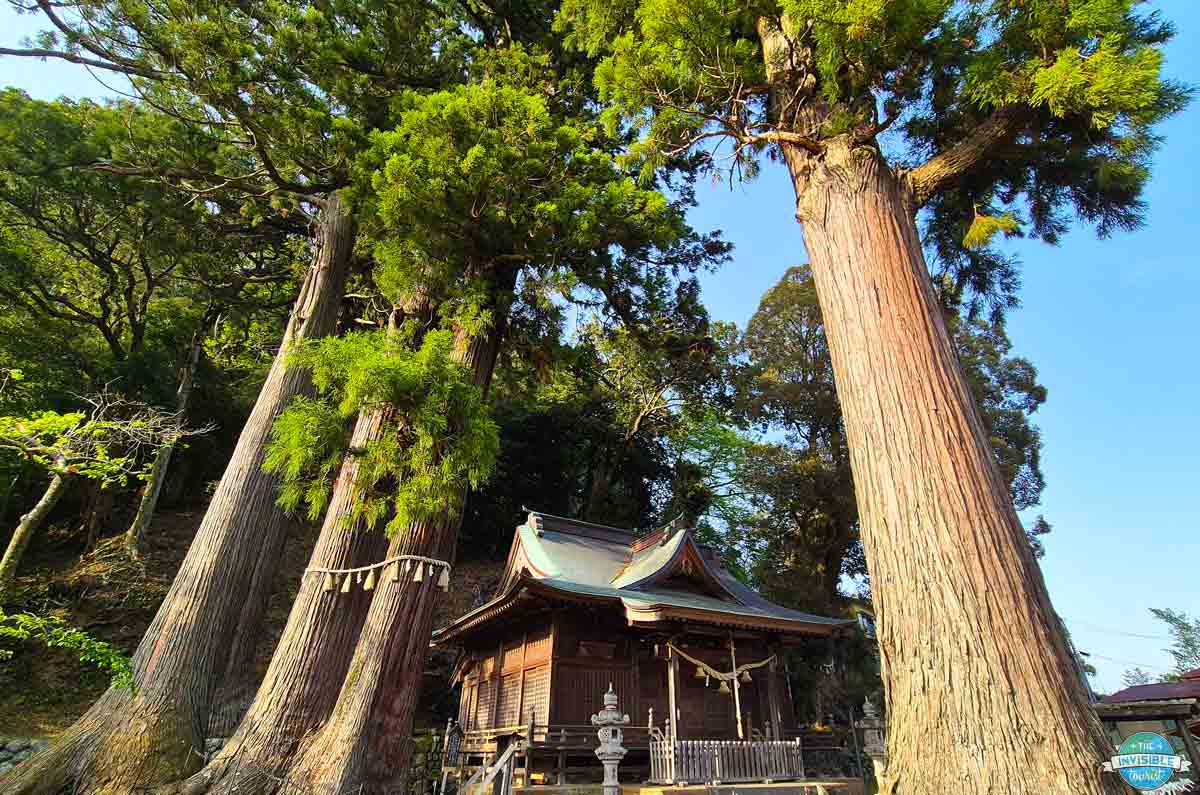
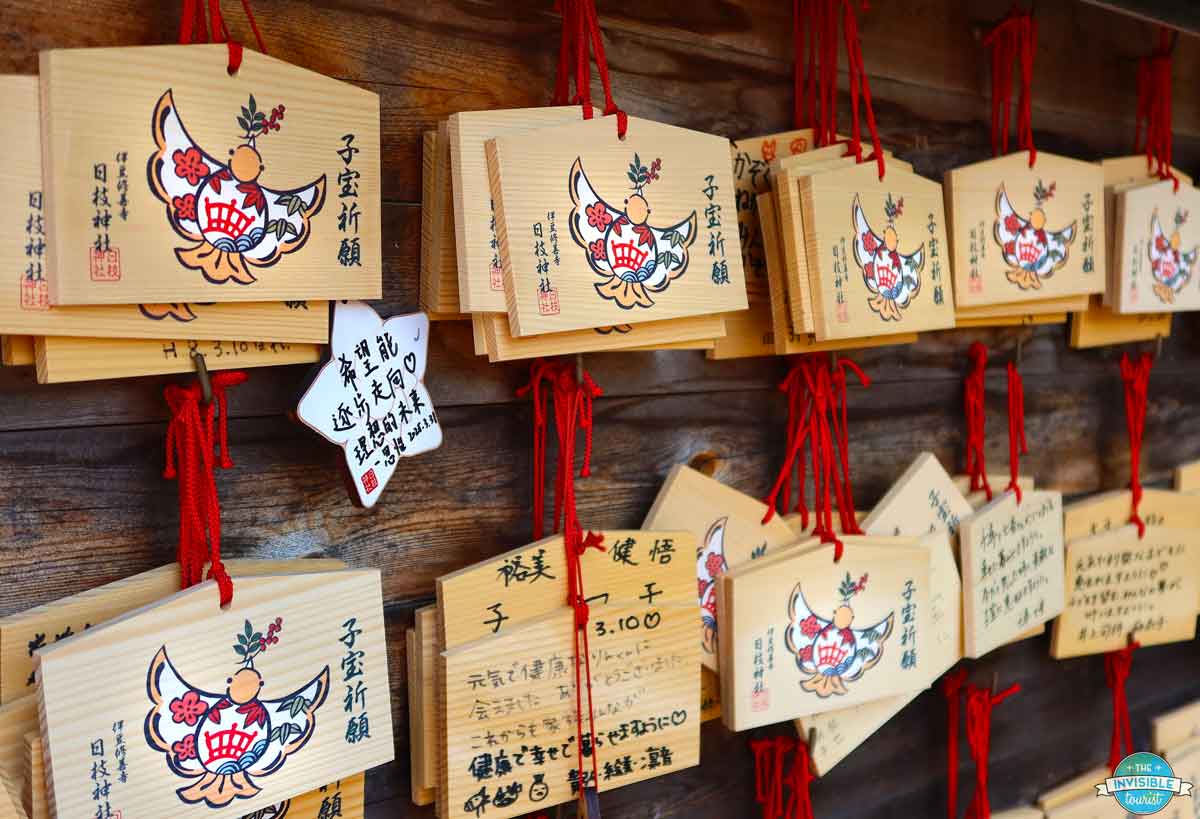
Soak away the evening in an onsen
Hopefully you’ve booked a Shuzenji onsen ryokan or hotel to enjoy soaking in its hot waters this afternoon!
Appreciate the full omotenashi experience (exceptional Japanese hospitality) and make use of the onsen facilities at your accommodation into the evening. Here are the important things to know about onsen ryokan.
Tips about Japanese onsen culture to “blend in”:
- Check tattoo policies – With the exception of a few, most onsen in Japan are not tattoo friendly. Please check your accommodation’s policy before booking to avoid disappointment.
- Wear the yukata – Onsen ryokan will provide yukata to wear, and provide lockers or baskets to leave your belongings as you bathe.
- Shower beforehand – Use the showers provided beside the onsen to wash off any oils, perfumes, deodorants, dirt, sweat, etc.
- Wear your birthday suit – Swimwear is not permitted in onsen. This is to prevent contaminating the natural minerals in its waters.
- Communal onsen are segregated – In onsen ryokan, there will be one onsen for males and another for females.
TIP: If you aren’t comfortable bathing around other people, book a ryokan with a private onsen as I did down the page.
- Don’t get your hair wet – Please don’t dip your hair or your modesty towel in the onsen waters. Leave the towel on your head or over to the side.
- Beware of nausea – I suffered from nausea due to overheating during my first few tries in onsen many years ago. I thought onsen was not for me until I tried again recently in Shuzenji. The way I prevented it happening was to leave the top half of my body out as this helped balance my blood flow. Yay!

Where to stay in Shuzenji Onsen
Instead of staying within the old hot spring town during my visit, I decided to splurge a little at Lafloret Shuzenji Sanshisuimei. It’s atop a mountain overlooking Shuzenji below, and my room featured a private, open-air onsen on my balcony with views of Mt Fuji.
TIP: The Marriott Shuzenji is also on the same mountaintop with similar amenities.
I’ve shared my full review of Lafloret Shuzenji in my guide to Izu ryokan and hotels including Atami, but for a quick breakdown of this property:
- Lafloret Shuzenji onsen hotel is enormous and has on-site activities to enjoy.
- Rooms are in separate apartment blocks to the main reception building. Park out the front of your apartment block.
- My room included a tatami living room area, outdoor shower and private onsen bath on the balcony with a view of Mt Fuji.
- My room plan included a scrumptious multi-course dinner featuring quality Japanese cuisine and breakfast.
- Absolutely recommend it for a family, small group, or couples looking to treat themselves!
TIP: While overlooked by foreign tourists, Shuzenji Onsen is adored by locals and may be busy on weekends. A mid-week stay would be best if your schedule allows.
As the resort is located on the maintaintop, Lafloret Shuzenji is ideal if you’ll be hiring a car – which I strongly recommend for the Izu Peninsula given its infrequent public transport network.
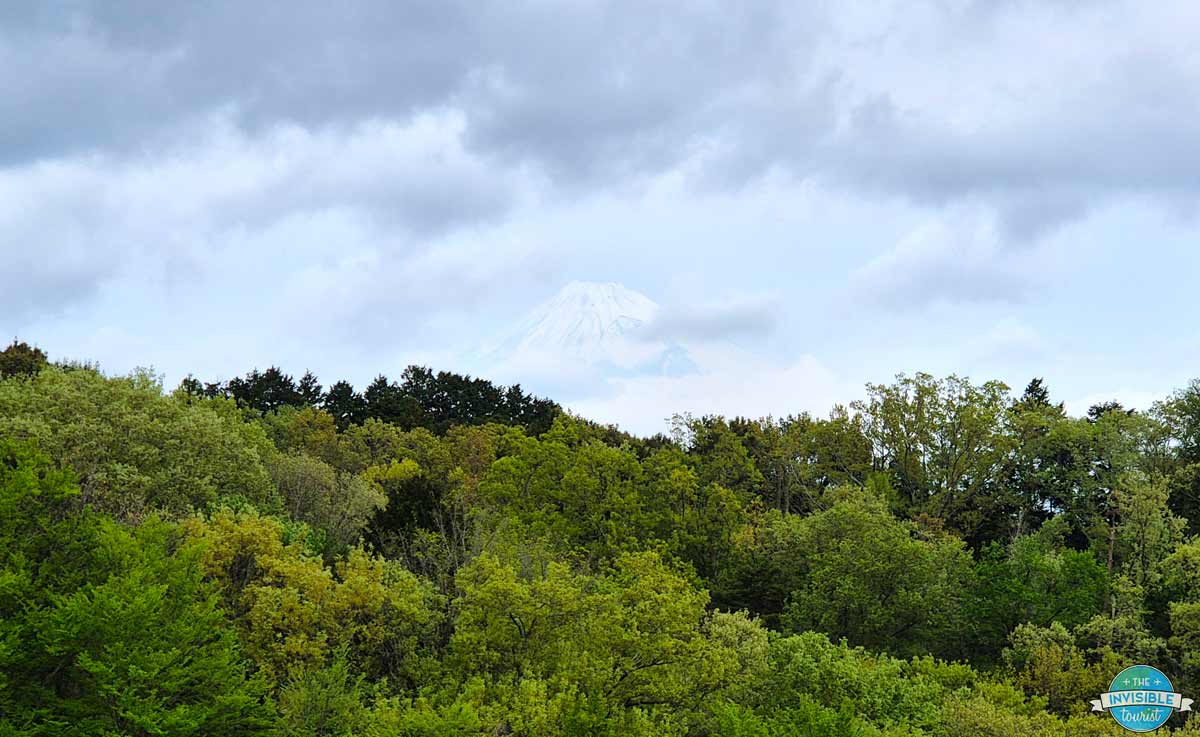
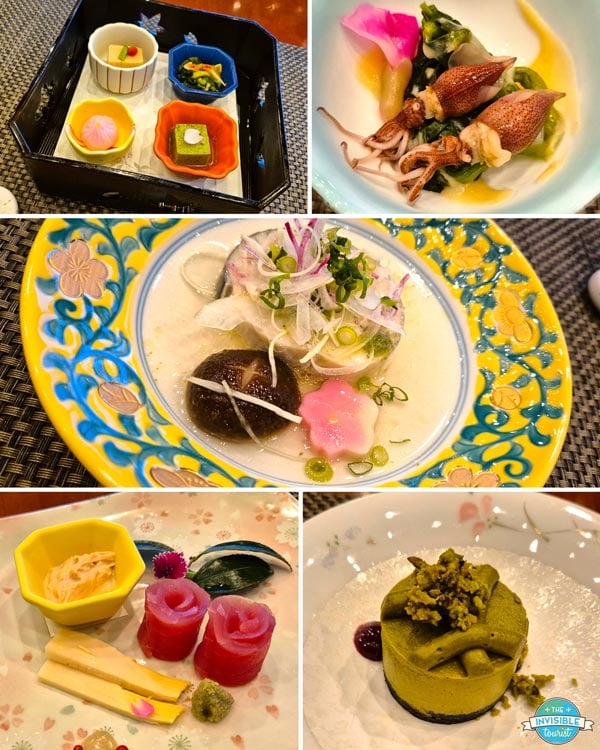
How to get to Shuzenji Onsen
Shuzenji Onsen town is about 5-10 mins drive away from JR Shuzenji Station, or 30 mins walk. Options to get there include on a private tour, by car, train, bus, or taxi:
Private Izu Peninsula tour with a local expert
For my readers who prefer not to drive themselves in Japan but want to visit the most offbeat spots, allow me to introduce you to your new local friend in Izu, Jimmy from Discover Izu Tours!
Jimmy is a walking encyclopedia about Izu, having lived in between Japan and the USA for 30 years. For my first visit, I spent two days with Jimmy on a private tour of the most overlooked and beautiful places on the peninsula, and his passion for his home shines through.
Jimmy offers half day, full day and customised tours of Izu, so just tell him your interests and he’ll be able to take you to some stunning off the beaten path locations including Shuzenji. His tours really made me fall in love with Izu and the generosity of its locals.
By car
As mentioned earlier, for flexibility I do recommend driving around the Izu Peninsula. We need to park in designated areas/parking lots, so be mindful of that.
TIP: You can read everything you need to know in my guide to driving in Japan for foreigners. I’ve done this close to a dozen times now, it’s not as scary as you may think!
- Pick up – Hire a rental car from JR Mishima or Numazu Stations and drive to Shuzenji Onsen, approx 35 mins.
- Parking – There is a main parking lot in the centre of town, as well as smaller ones. Navigate to Yuryo Parking Lot 有料駐車場. It costs 500 yen for one day. Park your car first then pay cash at the manned booth.
By train
- Shuzenji Onsen from Tokyo – Take the JR limited express Odoriko train from JR Tokyo Station to Shuzenji Station, approx 2 hours. Seat reservations are essential. Cost: 4500 yen one way.
- Shuzenji Onsen from Kyoto/Osaka – Take the JR Tokaido shinkansen to Mishima Station, then switch to the Izuhakone Rail line to Shuzenji Station, approx 35 mins. Cost: 550 yen one way.
- TIP: The once popular Japan Rail Pass rarely pays off financially anymore, I instead recommend buying individual tickets as you go.
Bus or taxi from Shuzenji Station
- Bus – Take the bus for Shuzenji Onsen 修善寺温泉 or Nijino Sato 虹の郷 and get off at Shuzenji Onsen stop. Cost: 260 yen one way.
- Taxi – There are usually taxis waiting at Shuzenji Station. A 5-10 mins ride to the main area of town costs about 1300 yen one way.

Concluding this Shuzenji Onsen itinerary
Its 1,200 year history, preserved buildings and central river make it easy to see why this town earnt its name as the Little Kyoto of Izu. Now you know what to do in Shuzenji Onsen, how to get there by different means, options for where to stay, Japanese onsen etiquette and more to help you make the most of your visit.
As I didn’t see any other foreign tourists during my stay, I can say Shuzenji is one of the overlooked onsen towns to visit in Japan. I hope you’ve found my Shuzenji Japan guide helpful!
Will you be adding this lovely spot to your Japan itinerary? Do you have any questions? Feel free to let me know in the comments below.
More expert Japan travel itineraries
While you’re here, check out more of my guides to off-the-beaten-path locations like Shuzenji:
- My one to 7 day Izu Peninsula itinerary for more uncrowded gems;
- Don’t miss my guide to the Kawazu Seven Waterfalls whilst you’re in Izu;
- Read my Japan honeymoon itinerary (with romantic scenery even if it’s not your honeymoon);
- Itinerary for two weeks in Japan including how to see popular sights without crowds;
- Go further with my itinerary for 3 weeks in Japan, including the New Golden Route;
- Avoid crowds with my itinerary for 10 days in Japan exploring the lesser-known;
- Add on an amazing Kyushu itinerary to your trip;
- Visit Japan’s paradise islands with these unique things to do in Okinawa;
- Take a look at all my Japan travel tips and Japanese etiquette for mistakes to avoid;
- And for all my itineraries, travel guides and more from my travels over the past decade, check my extensive Japan travel blog!
Feeling social? Explore beyond the main touristy sights with my dedicated Japan Off the Beaten Path Facebook Group or come and join me on YouTube, Facebook, Pinterest, TikTok and Instagram for more travel inspiration!
Until next time,

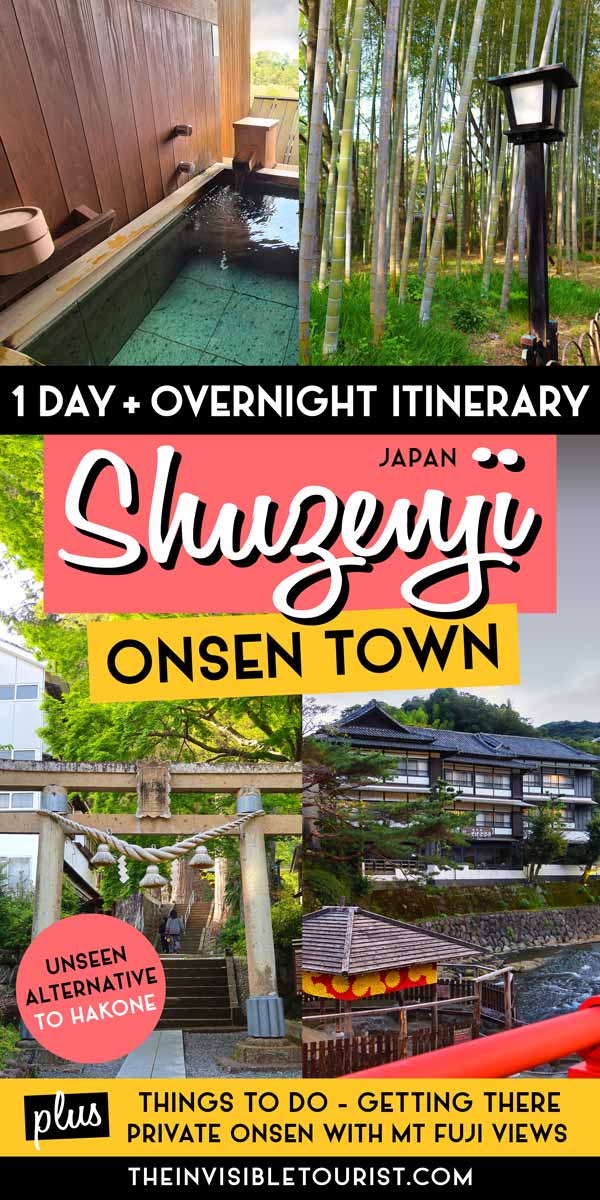
This Shuzenji onsen itinerary contains some affiliate links. I may earn a small commission if you decide to make a purchase and if you do, thanks for your support! This helps with the costs of running my blog so I can keep my content free for you. As always, I only recommend a product or service that I genuinely love and use myself!
